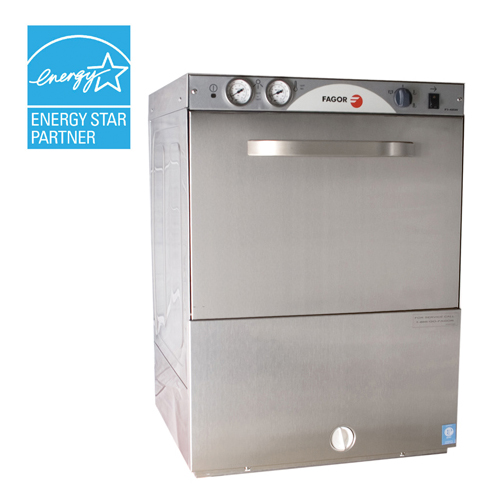 The dipper well is a small countertop sink that uses a constant flow of water to clean utensils like ice cream scoops and barista thermometers. The sink fills up to a certain level and then drains away, so a dipper well acts like a constantly filling pool. The in and out flow of water makes it convenient to clean utensils because any residue drains out automatically as the pool continues to fill.
The dipper well is a small countertop sink that uses a constant flow of water to clean utensils like ice cream scoops and barista thermometers. The sink fills up to a certain level and then drains away, so a dipper well acts like a constantly filling pool. The in and out flow of water makes it convenient to clean utensils because any residue drains out automatically as the pool continues to fill.
The problem is that many coffee shops and ice cream parlors leave their dipper wells on regardless of how much business they’re doing. That means water is constantly flowing, and it adds up very quickly. As restaurants explore sustainable and environmentally friendly practices, partly out of personal conviction, partly out of the need to cut costs, and mainly because customers are demanding it, things like the dipper well have become more and more obsolete.
The sad fact is that we can hardly afford the convenient luxury of a dipper well any more. A UNLV professor in Las Vegas conducted a study of water use as a direct result of dipper wells, and the results were pretty shocking, especially for a city located in the middle of a desert that is susceptible to drought: 2,453 dipper wells in 1,134 food service locations used 106.4 million gallons of water in a single year. The professor says the numbers are pretty conservative and the real totals are probably much higher.![]()
Starbucks has taken a lot of flack for their use of dipper wells as well, particularly in England, where a news article was recently published with similarly shocking numbers: 5.85 million gallons of water are used in the 10,000 global Starbucks locations every day. Starbucks has pledged to remove dipper wells from their U.S. locations by the end of this year, and international shops will follow suit soon after.
Dipper wells became so ubiquitous because of food safety concerns. A constant flow of water helps prevent bacterial buildup, and they are so easy to clean and use that even the greenest employee can be put to work while minimizing contamination problems. Plenty of other methods address the food safety issue and are almost as easy to implement, however.
Besides the ethical issue of wasting a precious resource like potable water, dipper wells are also a drag on any business’ bottom line. It’s a deceivingly large monthly expense that’s easy to miss since your water bill also includes dishwashing, food prep, beverages, ice, etc. Depending on how many dipper wells you use, turning them off could add up to several hundred dollars a year once you account for water and wastewater charges.
 What are some alternatives to dipper wells? Starbucks has started using a one scoop, one pitcher policy in some stores, meaning the scoop and pitcher are used once before being washed. A commercial undercounter dishwasher could easily replace a dipper well and significantly reduce water usage since many models use less than a gallon per rack.
What are some alternatives to dipper wells? Starbucks has started using a one scoop, one pitcher policy in some stores, meaning the scoop and pitcher are used once before being washed. A commercial undercounter dishwasher could easily replace a dipper well and significantly reduce water usage since many models use less than a gallon per rack.
Many other options exist; just make sure you consult with your local Board of Health to ensure you are minimizing contamination risks before shutting down your dipper well for good. Replacing the dipper wells in your establishment will save you money, save you face, and earn you some green restaurant credibility with your customers. And you just might be helping the environment along the way, a very marketable side effect to a smart business decision.
 Corner Booth Blog | TundraFMP Restaurant Supply, News & Equipment Blog
Corner Booth Blog | TundraFMP Restaurant Supply, News & Equipment Blog



